Of The Three Musketeers wielding art duties for Necronomicon Press (The remaining duo being Jason Eckhardt and Allen Koszowski), Robert H. Knox rightfully crowns himself—by virtue of this volume alone—with the million-colored sun of worlds incredible: The Worlds of Clark Ashton Smith.
This imprint’s earlier series in square chapbook format, The Unexpurgated Clark Ashton Smith, utilized Knox’s talents which yielded an apogee design wise for the small weird press. Amberlithic artisanally separated colors were inherent in all their paper wraps, an exemplar being The Dweller in The Gulf (1987), the eyeless Martian ophidian of the title delineated in brilliant scarlet and verdigris over a xanthic field.
In a sense, Knox has collaborated with Smith before by way of color adaptations of CAS’ illustrations for H. P. Lovecraft’s Home Brewn “The Lurking Fear.” Inadvertently not credited in the recent New Annotated H. P. Lovecraft: Beyond Arkham (2019: Norton), credit where due was given when these illustrations were first published in the stand-alone edition of the tale by Necronomicon Press.
It has been my gease to exhibit Robert Knox’s work in my stint as curator for the Ars Necronomica art exhibitions running 2013 through 2019. These included one of his supreme works, a definitive depiction of “The Tomb Spawn,” that bifurcated, beaked entity waiting beneath the sands of Zothique.
Not so much an influence on Knox’s oeuvre as hand in synchronicity over epochs would be the work of Max Ernst, esp. his series depicting the dreamscape La Ville Entière (1933-1937) or typified by collage work done in Une Semaine De Bonté (1935). Indeed, as Franklin Booth rendered his pen and ink illustrations according to the detail of wood engraving, so has Robert Knox taken Ernst’s collage/cut-up method and drawn his own juxtapositions by hand, an example being the plate “Bow down…” for the title poem in this present collection. He brings form, weight, and dimension even to the merest patterned hem of CAS’ sleeve. Another precursor, Richard Powers, with his paintings for Ballantine paperbacks in the early 1960s (such as the cover for the anthology Things With Claws) is an ancestral inhabitant of Knox’s painting The Ghooric Zone (2015) or, more recently, the cover for Robert Waugh’s The Tragic Thread in Science Fiction (2019: Hippocampus).
Visions of the outré in this expanded edition of The Hashish Eater list a startlingly correct interpretation of Smith’s “Surrealist Sonnet”; “Nero”—the physiognomy reminiscent of Clark Ashton Smith’s carvings or even the profile of his mentor George Sterling; and a depiction of “The sacred flower…of some red Antarean garden-world.” Knox’s livid floral arrangements for Klarkash-Ton in particular render him a worthy groundsman for Maâl Dweb—one waits for the burgeoning maturity of his own “Flower Women”…
Clark Ashton Smith once expressed the desire to focus on painting (as opposed to writing for financial concerns) to H. P. Lovecraft on January 9th, 1930, to enjoy “nothing better than to fare forth in a debauch of form and color.” Robert H. Knox carries on these revelries, illuminating them for The Auburn Magus radiantly.
–The joey Zone
